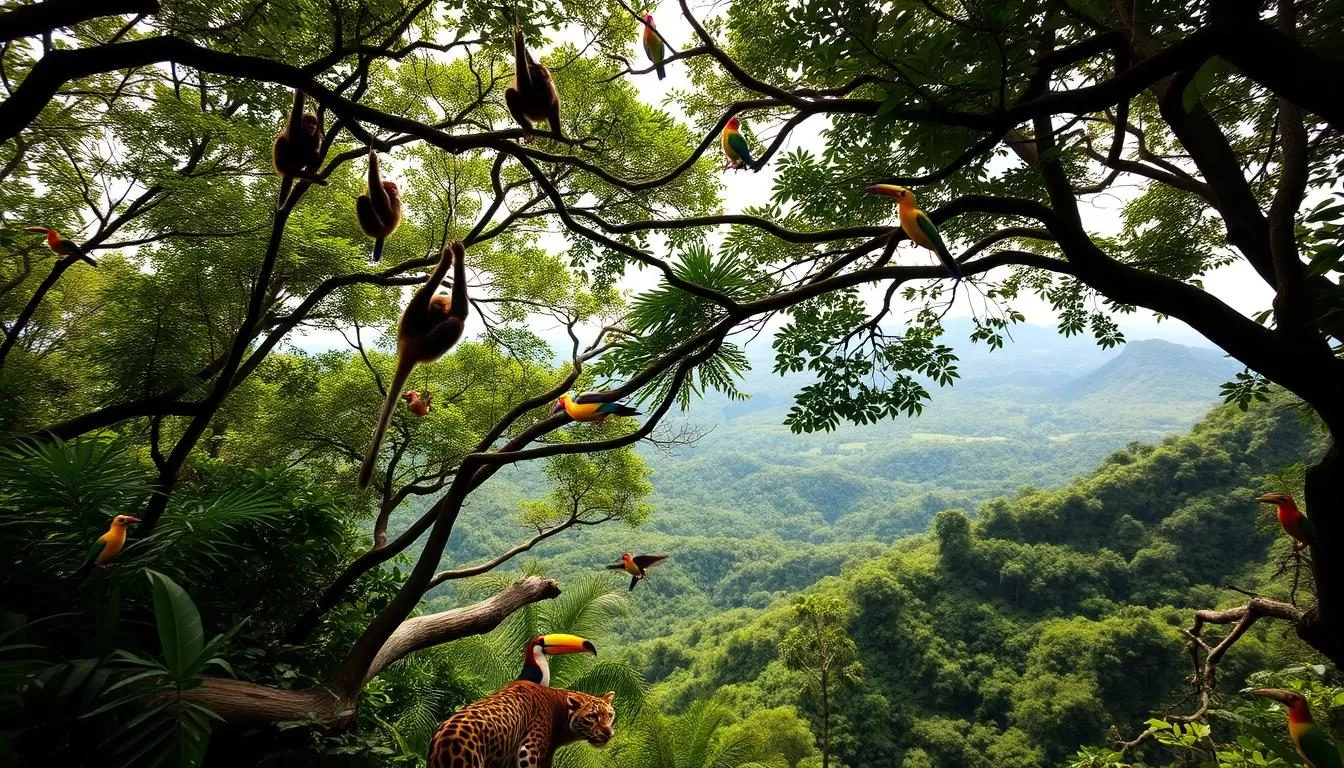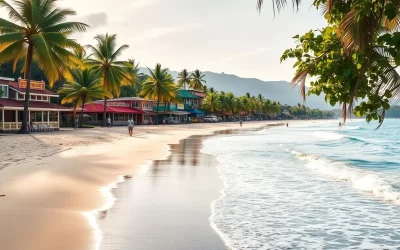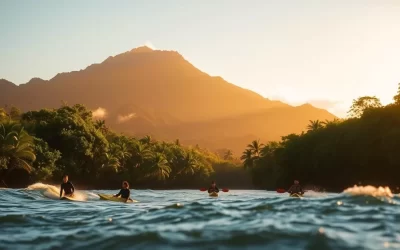✓ Accommodations✓ Flights✓ Rental Cars
Imagine immersing yourself in one of the most biodiverse places on the planet, where wildlife and nature thrive in an untouched rainforest. Corcovado National Park is a haven for adventurers and nature lovers alike, covering over 42,000 hectares of pristine rainforest on the Osa Peninsula in Costa Rica.
This incredible experience is home to 2.5% of the world’s biodiversity, despite occupying only 0.001% of the Earth’s surface area. As you explore the park, you’ll have the opportunity to witness an array of wildlife, from tapirs and jaguars to scarlet macaws and all four Costa Rica monkey species.
With its vast array of hiking trails, overnight stays, and marine adventures, Corcovado National Park offers a truly wild experience unlike any other national park. This guide will walk you through everything you need to know to plan your visit and make the most of your time in this incredible destination.
Discovering Costa Rica’s Wildest Paradise
With its vast expanse of untouched rainforest, Corcovado National Park is a place where nature reigns supreme. Spanning over 42,000 hectares, this pristine wilderness is a testament to Costa Rica’s commitment to preserving its unique biodiversity.
The Biodiversity Capital of Costa Rica
Corcovado National Park is home to an astonishing array of flora and fauna. It boasts 500 species of trees, 10,000 types of insects, 375 species of birds, 160 reptiles and amphibian species, and over 150 types of mammals. This rich biodiversity offers a genuine experience for visitors, with opportunities to see rare wildlife in their natural habitat.
- Encounter all four Costa Rican monkey species.
- Spot tapirs and possibly even elusive big cats.
- Explore one of the most remote and pristine wilderness areas in Central America.
Why Corcovado Should Be on Your Bucket List
Visiting Corcovado National Park is not just about observing wildlife; it’s about immersing yourself in an adventure. The park’s lack of paved trails and commercial facilities ensures that visitors have a genuine connection with nature. The strict visitor limitations create a more intimate and authentic experience, making it a truly unique destination.
Some of the key reasons to visit include:
- The chance to explore untouched rainforests and beaches.
- The opportunity to see a wide variety of wildlife in their natural habitat.
- The sense of adventure that comes with exploring a remote wilderness area.
When to Visit Corcovado National Park
To make the most of your trip to Corcovado, it’s crucial to know when to go. The park’s diverse climate means that the best time to visit depends on your preferences and what you want to experience.
Dry Season (December to April)
The dry season is characterized by dry and sunny weather, making it ideal for hiking and exploring the park’s trails. However, this is also the peak tourist season, so you can expect larger crowds.
Rainy Season (May to November)
The rainy season transforms Corcovado into a lush, vibrant landscape. May is often considered an ideal time to visit, with fewer crowds, lower prices, and a balance of sunny mornings and afternoon showers. The cooler temperatures during this time can lead to more wildlife sightings. However, from July to November, the rainfall intensifies, with October being the wettest month, potentially causing some areas of the park to close.
Visiting during the rainy season requires proper preparation, including waterproof gear and protection for your electronics. Despite the challenges, the weather conditions can make the forest feel more alive, with flowing waterfalls and rivers.
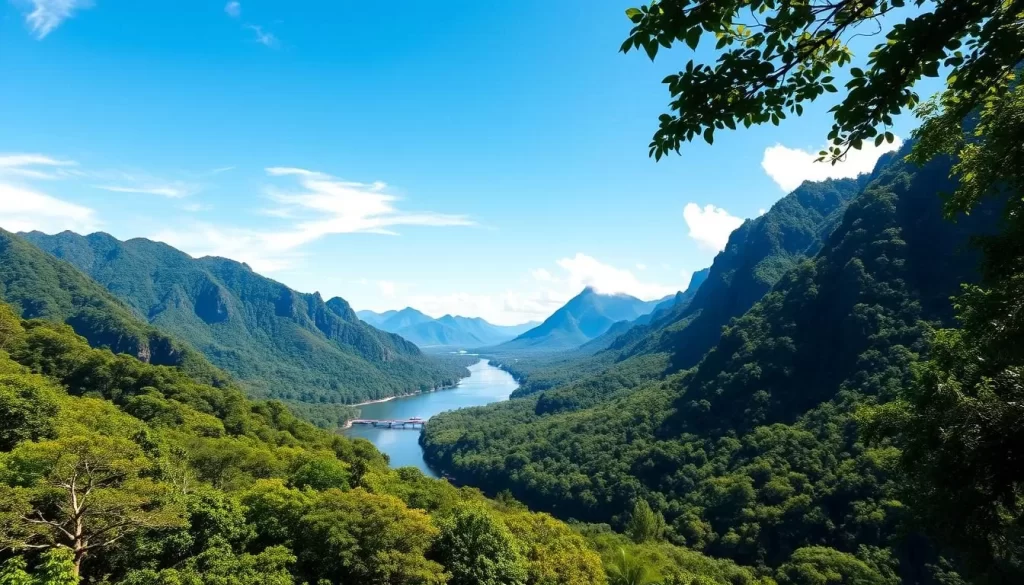
Ultimately, the best time to visit Corcovado National Park is a trade-off between favorable weather conditions and the activities you have planned. Whether you choose the dry or rainy season, being prepared will ensure a memorable experience.
How to Get to Corcovado National Park
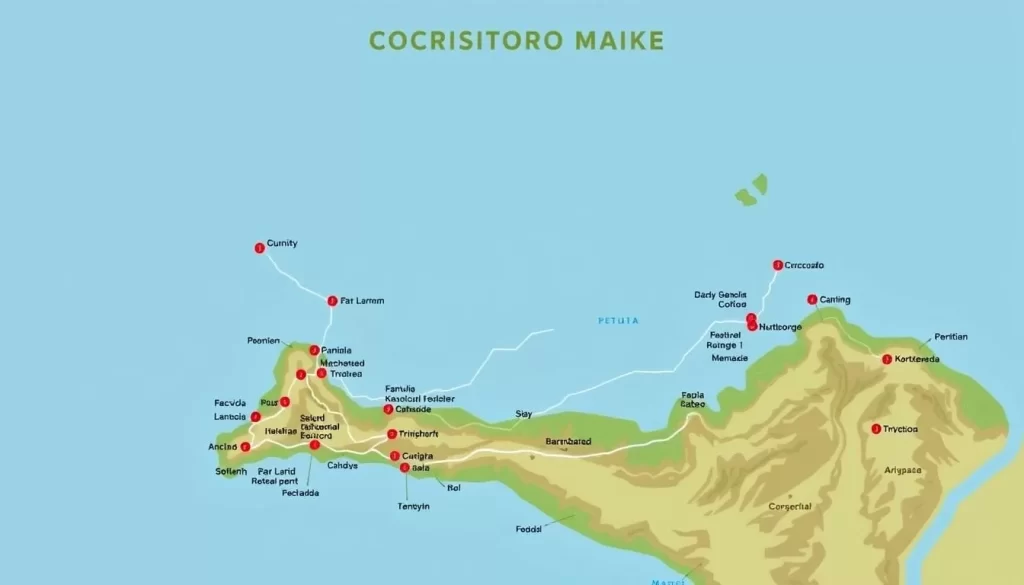
Getting to Corcovado National Park requires some planning, but the journey is well worth the effort for the breathtaking landscapes and wildlife that await. The park is accessible through different routes, primarily from Drake Bay and Puerto Jiménez, each with its unique advantages.
From Drake Bay
Drake Bay is a picturesque coastal town that serves as a gateway to Corcovado National Park. While it’s a bit more challenging to reach due to the lack of established roads, the scenic beauty of the area makes it an attractive option for travelers. To get to Corcovado from Drake Bay, visitors typically take boat tours to various sections of the park, offering a unique perspective on the coastline and marine life.
Traveling from Drake Bay allows you to experience the park’s coastal beauty and is ideal for those looking for a more secluded and serene experience. However, it’s essential to plan ahead and book guided tours in advance to ensure availability.
From Puerto Jiménez
Puerto Jiménez is the largest town on the Osa Peninsula and offers more amenities, including banks, supermarkets, and a wider range of accommodations. It’s a more accessible option, especially for self-driving travelers, as it has established roads. You can reach Puerto Jiménez by taking an 8-10 hour bus journey from San José or a 30-minute flight from the capital.
From Puerto Jiménez, visitors can access the park by traveling to Carate, the closest point to the La Leona entrance, or by taking boat tours to other sections. This access point is particularly ideal for those wanting to explore the eastern and southern sections of the park, including the popular La Leona trail.
Puerto Jiménez is a better option for travelers without a 4×4 vehicle, as it has more developed infrastructure. The town’s amenities and transportation options make it a convenient starting point for your adventure in Corcovado National Park.
Corcovado National Park: Best Things to Do – Top Picks
As you step into Corcovado National Park, you’ll be immersed in a world teeming with life. This park is a treasure trove of biodiversity, offering countless opportunities to explore and discover its natural wonders.
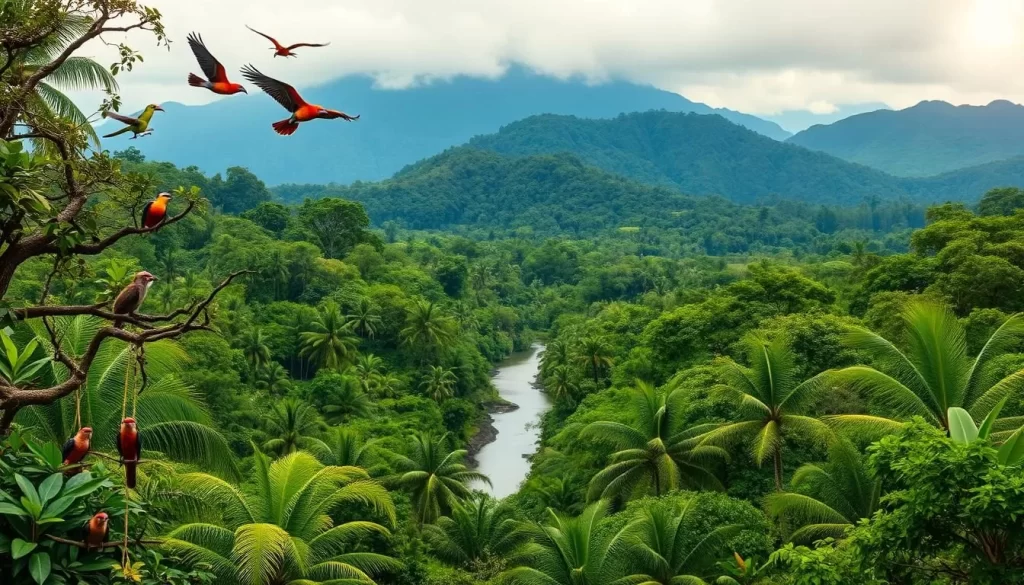
Wildlife Watching Opportunities
Corcovado National Park is renowned for its incredible wildlife watching opportunities. With its diverse ecosystems, ranging from rainforests to coastal areas, the park is home to a vast array of species. You can expect to see a variety of animals, from monkeys swinging through the trees to birds flying overhead.
The park’s diverse habitats support a wide range of wildlife, including four species of monkeys: howler monkeys, known for their distinctive roars, white-faced capuchins, spider monkeys, and the endangered squirrel monkeys. Larger mammals like Baird’s tapirs can be spotted near Sirena Station, and with a bit of luck, you might even catch a glimpse of big cats like pumas or ocelots.
What Animals You Might See
The park is a haven for bird enthusiasts, with species like scarlet macaws, toucans, hummingbirds, and the endangered harpy eagle. You might also spot reptiles and amphibians, such as the American crocodile, various snake species, including the venomous fer-de-lance, and colorful poison dart frogs.
Other common wildlife sightings include coatis, agoutis, peccaries, and two-toed and three-toed sloths. With patience and a keen eye, you can experience the rich biodiversity that Corcovado National Park has to offer.
- Observe the diverse monkey species, including howler, white-faced capuchin, spider, and squirrel monkeys.
- Spot larger mammals like Baird’s tapirs and potentially big cats such as pumas or ocelots.
- Enjoy the abundant bird life, featuring scarlet macaws, toucans, and hummingbirds.
- Encounter reptiles and amphibians, including crocodiles, snakes, and poison dart frogs.
- See other wildlife like coatis, agoutis, peccaries, and sloths.
Day Tour to Sirena Ranger Station
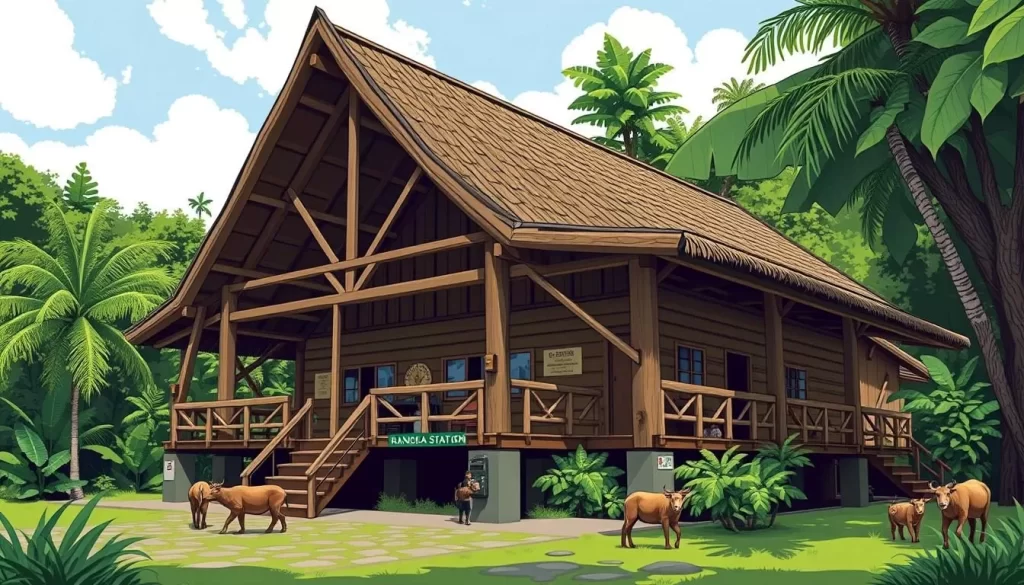
Embark on an unforgettable journey to the Sirena Ranger Station, a haven for wildlife enthusiasts. The Sirena Biological Station is one of the best places to watch wildlife in Corcovado National Park, home to a diverse range of animals, including tapirs, monkeys, peccaries, and sloths.
What to Expect
During your day tour to the Sirena Ranger Station, you can expect an immersive experience into the heart of Corcovado’s wilderness. The area around Rio Claro and Rio Sirena is renowned for its prime wildlife viewing opportunities, particularly for tapirs that often come to drink and bathe.
The open grassy areas near the Sirena station are another highlight, where animals frequently graze and are easily spotted.
Best Wildlife Viewing Spots
The Sirena Ranger Station offers several exceptional wildlife viewing spots. The beach areas near Sirena provide opportunities to see marine birds, crocodiles at river mouths, and occasionally marine turtles. The junction of primary and secondary forest creates edge habitats where animals tend to congregate, making these areas ideal for spotting a variety of species.
Your guide will be knowledgeable about the current hotspots for wildlife activity, as animal movements change seasonally and even daily, ensuring that you make the most of your visit to the Sirena Station.
Hiking the La Leona Trail

For those seeking an unforgettable trek, the La Leona Trail in Corcovado National Park is a must-visit. This trail offers a unique blend of adventure and wildlife viewing opportunities, making it a highlight for many visitors to the park.
Trail Highlights and Difficulty
The La Leona Trail is known for its challenging terrain and diverse landscapes, ranging from dense forests to open beaches. The trail’s difficulty level is moderate to high, requiring a good level of physical fitness. However, the rewards are well worth the effort, with breathtaking views and abundant wildlife viewing opportunities.
The trail’s proximity to the ocean adds to its allure, with the sound of waves and the sight of marine life creating a multisensory experience. You’ll have the chance to see various animals, including monkeys, sloths, and anteaters.
Wildlife Viewing Opportunities
The La Leona Trail is particularly noted for its high number of puma sightings, although spotting these elusive cats requires exceptional luck. The trail is also home to a diverse array of wildlife, including all four species of monkeys found in Costa Rica: howler, spider, capuchin, and squirrel monkeys.
The mix of beach and forest environments along the trail creates a unique opportunity to see both terrestrial and marine wildlife. You might spot scarlet macaws flying overhead, marine birds, hermit crabs, and possibly marine turtles, especially during certain seasons. Wildlife viewing is particularly good in the early morning hours when animals are most active and temperatures are cooler.
Exploring San Pedrillo Station

Corcovado’s San Pedrillo Station is a treasure trove of natural wonders, waiting to be explored. This unique destination combines primary forest elevations, waterfalls, rivers, and beaches all in one, making it an adventurer’s paradise.
Waterfalls and Beaches
One of the main attractions at San Pedrillo is its breathtaking waterfalls. The cold water is perfect for a refreshing swim, and the serene environment is ideal for connecting with nature. You can also enjoy the beautiful beaches, where you can relax and soak up the sun.
The combination of these natural features makes San Pedrillo a unique spot for both relaxation and adventure. Whether you’re looking to hike to the waterfalls or simply enjoy the beaches, San Pedrillo has something for everyone.
Best Time to Visit San Pedrillo
The best time to visit San Pedrillo is during the dry season (December to April), when the trails are less muddy and the waterfalls are still flowing but more accessible. Early morning visits offer the best wildlife viewing opportunities and cooler hiking conditions.
Additionally, late afternoon visits provide spectacular lighting for photography and the chance to witness the renowned San Pedrillo sunsets. It’s advisable to plan your visit to allow enough time to both hike to the waterfalls and enjoy the beaches, ideally allocating at least 5-6 hours in the area.
Diving and Snorkeling at Caño Island Biological Reserve
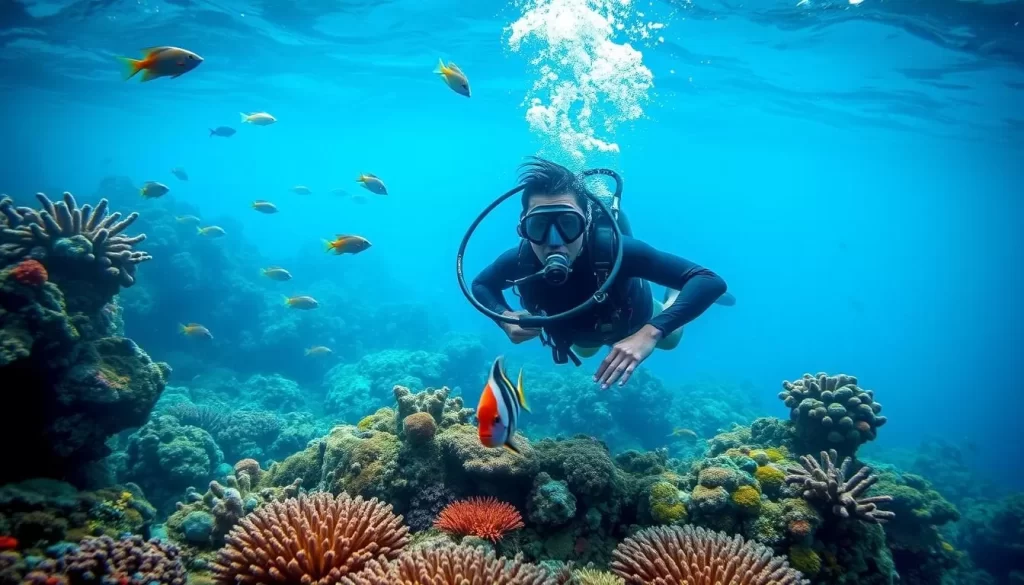
The Caño Island Biological Reserve is renowned for its exceptional diving and snorkeling opportunities. Located off the coast of Costa Rica, this reserve is a haven for marine life enthusiasts. The island’s unique location and protected status have created a thriving ecosystem that is home to an incredible array of marine species.
Marine Life to Discover
When you dive or snorkel at Caño Island, you can expect to encounter a diverse range of marine life. The waters are home to sea turtles, rays, and a variety of fish species. The reserve’s coral reefs are teeming with life, offering a colorful and dynamic environment to explore. Keep an eye out for dolphins and whales, which can sometimes be spotted in the area.
The reserve’s commitment to conservation ensures that the marine ecosystem remains healthy and vibrant, providing a rich experience for visitors.
Tour Options from Drake Bay
Tours to Caño Island typically depart from Drake Bay in the morning, with the boat journey taking approximately 30 minutes each way. You have several tour options to choose from, including snorkeling-only tours, diving excursions for certified divers, and combination tours that include both Caño Island and coastal exploration.
Most tour operators provide all necessary equipment, including masks, snorkels, fins, and wetsuits. However, experienced divers may prefer to bring their own gear. Tours usually include lunch on the island or at a beach, with time to relax between snorkeling or diving sessions. It’s advisable to book your tour in advance, especially during high season, as the number of daily visitors to the reserve is limited to protect the marine ecosystem.
Hiking El Tigre Trail
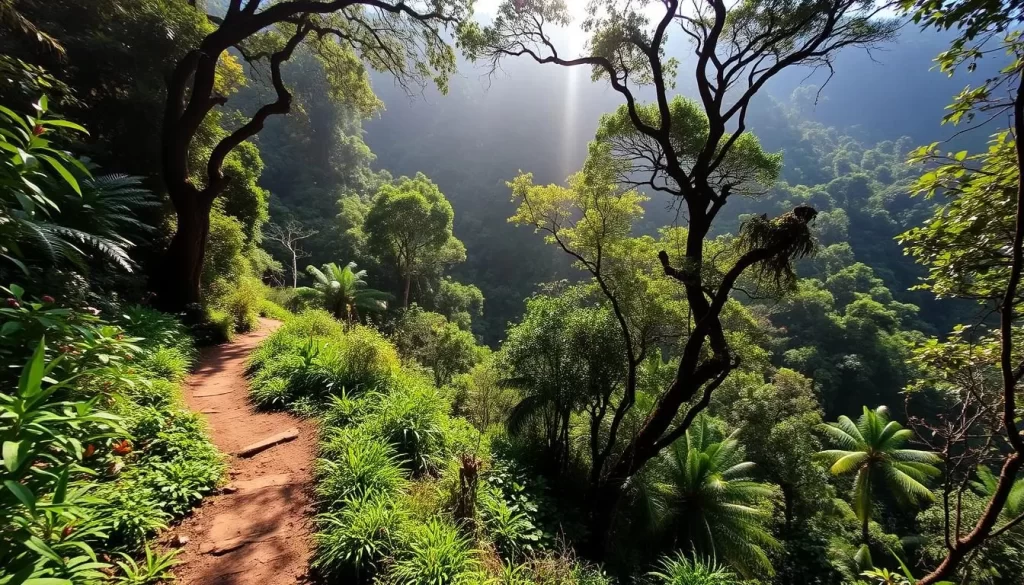
Discover the El Tigre Trail, a community-managed path that offers a unique blend of nature and culture. This trail is a hidden gem within Corcovado National Park, providing an immersive experience that connects you with the local environment and its history.
Trail Difficulty and Features
The El Tigre Trail is a moderately difficult hike that takes you through the lush forest surrounding the Dos Brazos de Río Tigre community. As you walk, you’ll be surrounded by the sights and sounds of the rainforest, with opportunities to spot exotic wildlife and plants. The trail is managed by the local community, ensuring that your visit supports sustainable tourism practices.
The trail’s unique feature is its connection to the area’s gold mining history. Local guides share stories and insights into the region’s past, providing a rich cultural context to your hike. You’ll gain a deeper understanding of the people who live in and around the park, and how their livelihoods are connected to the land.
Supporting Local Communities
By choosing the El Tigre Trail, you’re directly supporting the local community of Dos Brazos de Río Tigre. This community-based tourism initiative helps preserve the forest while creating sustainable livelihoods for people who once relied on gold mining. Your visit contributes to the local economy and promotes conservation efforts in the region.
Many tours along the El Tigre Trail include a traditional Costa Rican lunch prepared by community members, offering a taste of authentic local cuisine. This cultural exchange enriches your experience, making your visit a memorable and impactful one. You’re not just hiking a trail; you’re engaging with the community and supporting their development.
As you explore the El Tigre Trail, you’ll find that it’s a truly unique place, where the natural beauty of Corcovado National Park meets the warmth of the local community. This trail is an exemplary model of sustainable tourism, where the benefits of tourism are shared equitably among the local people, enhancing their lives and the environment they call home.
Overnight Stays in Corcovado National Park
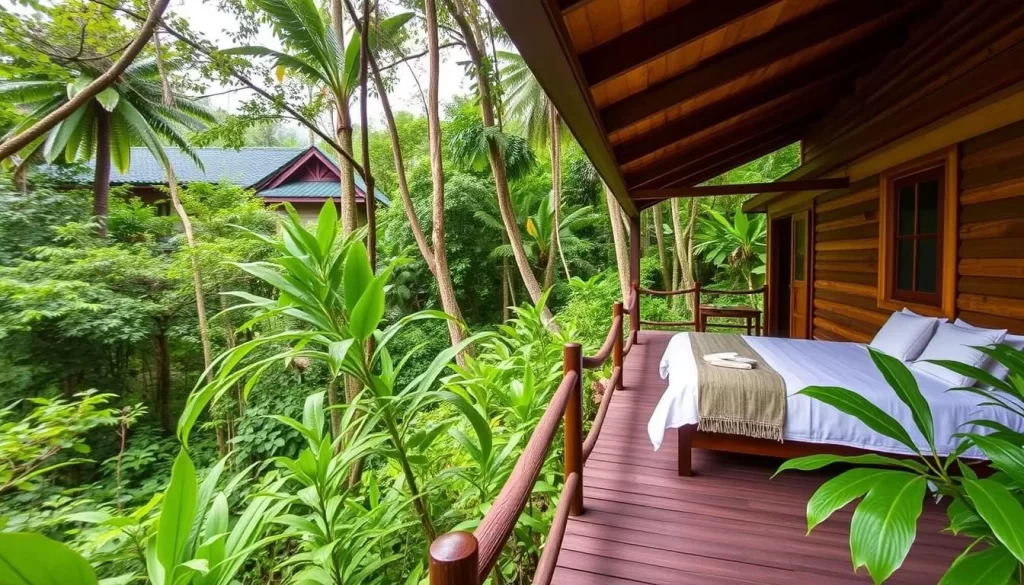
For a deeper connection with nature, an overnight stay in Corcovado National Park is an unforgettable experience. You’ll have the chance to immerse yourself in the park’s vast wilderness, surrounded by its incredible biodiversity.
Sirena Ranger Station Experience
The Sirena Ranger Station is one of the options for an overnight stay inside the park. Here, you’ll sleep in white mosquito-net-covered bunks in open-air dorms, enjoying the sounds of the rainforest at night. The station is equipped with restrooms, showers, and a dining hall where you’ll share meals with fellow travelers.
The daily routine at Sirena includes early morning wake-up calls around 5:00 AM, followed by guided hikes and meal times. You’ll have opportunities to buy coffee, souvenirs, and snacks, with credit cards accepted, making your stay convenient.
What to Expect and Pack
When preparing for your overnight stay, pack lightweight, quick-dry clothing, a headlamp or flashlight, insect repellent, and a small padlock for the lockers. All meals are provided, typically consisting of simple but hearty Costa Rican fare, with vegetarian options available if requested in advance.
It’s also advisable to bring a refillable water bottle, as drinking water is available at the station. While the experience is rustic, you can still enjoy unexpected amenities like coffee and snacks. With these details in mind, you’re ready to make the most of your night in Corcovado National Park.
Multi-Day Hiking Adventures
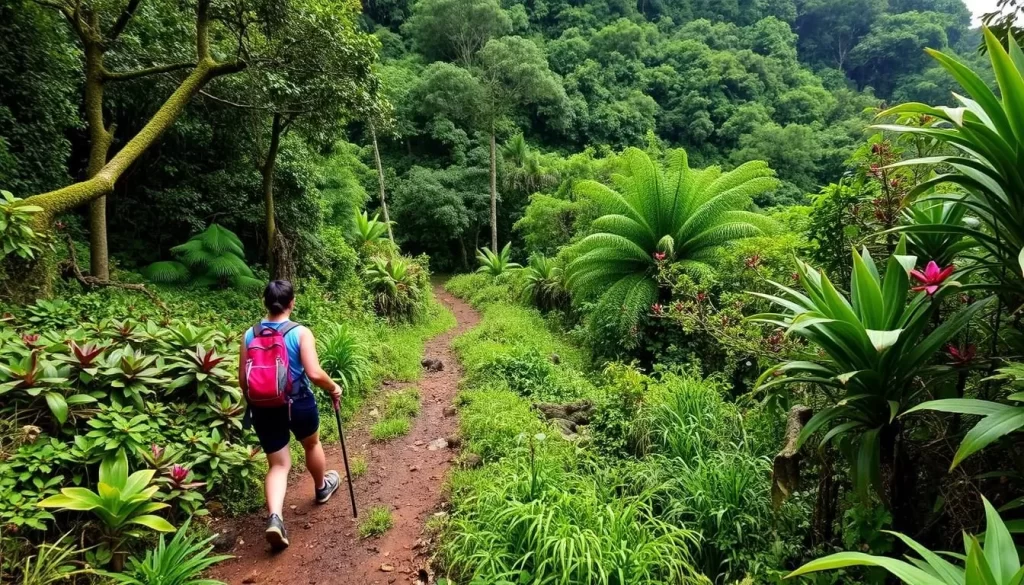
Embark on an unforgettable journey through Corcovado National Park with multi-day hiking adventures that showcase the park’s diverse landscapes and wildlife. These extended hikes allow you to delve deeper into the park’s pristine wilderness, offering a more immersive experience than a day trip.
Trail Options and Difficulty Levels
Corcovado National Park offers several multi-day hiking trails, each with its unique characteristics and challenges. The trails vary in difficulty, ranging from moderate to challenging, and cater to different interests and fitness levels. For instance, a three-day hike from Puerto Jiménez to Sirena Ranger Station is a popular tour option that includes two nights at the Ranger Lodge and all meals.
The difficulty levels of these trails are determined by factors such as terrain, distance, and elevation gain. It’s essential to choose a trail that suits your physical condition and hiking experience to ensure a safe and enjoyable journey.
Guided Tour Recommendations
When undertaking a multi-day hike in Corcovado, it’s highly recommended to book with experienced guide services that specialize in Corcovado expeditions. These guided tours typically include professional guides, park permits, accommodation at ranger stations, all meals, and sometimes boat transportation.
Experienced guides provide invaluable insights into the park’s ecosystem, enhancing your wildlife spotting opportunities and ensuring your safety throughout the journey. The cost of these multi-day hiking options can range from $500 to $700+ per person, depending on the tour operator and services included. Operators like Osa Wild and Sukia Travel are known for their quality multi-day hiking experiences, employing local guides with intimate knowledge of the park.
Where to Stay Near Corcovado National Park
The areas around Corcovado National Park are home to a diverse range of accommodations, from budget-friendly options to luxury eco-lodges. Whether you’re looking for a secluded retreat or a more vibrant town experience, there’s something for everyone.
Drake Bay Accommodations

Drake Bay offers a variety of accommodations that cater to different tastes and budgets. You can choose from eco-lodges, hotels, and vacation rentals that provide a tranquil atmosphere and stunning views.
Puerto Jiménez Lodging Options
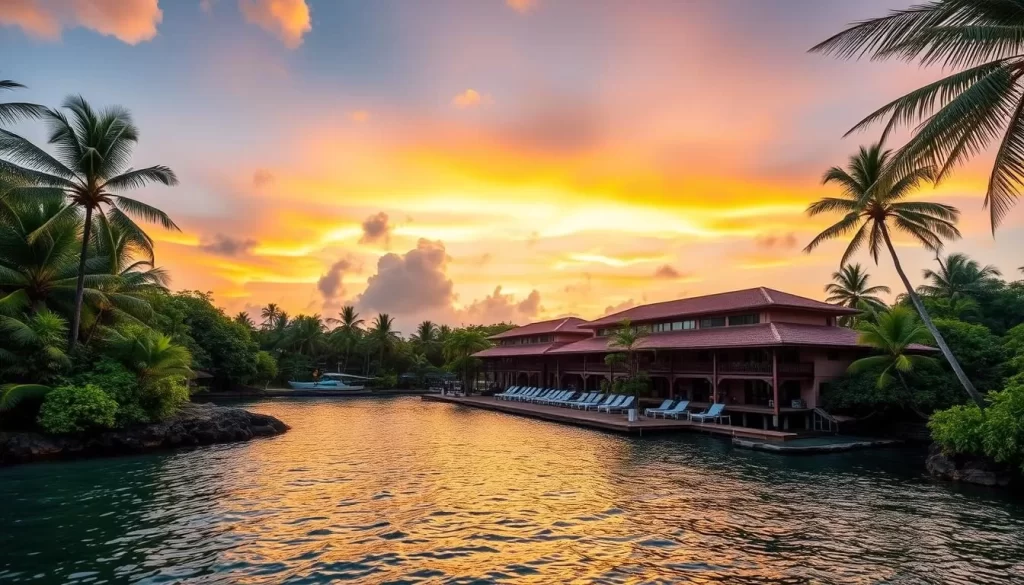
Puerto Jiménez is a larger town with more diverse accommodation options, ranging from budget hostels to comfortable hotels and eco-lodges. For budget travelers, options like Sweet Gulf Hostel and The Corner offer affordable rooms and dormitories. Mid-range accommodations such as Osa Lodge, Cabinas Marcelina, and Refugio Turistico are locally owned, providing an authentic experience. Waterfront options like Cabinas Jimenez offer views of Golfo Dulce and amenities like swimming pools. Generally, Puerto Jiménez accommodations offer more amenities and services than Drake Bay, thanks to better infrastructure.
Some recommended accommodations in Puerto Jimenez include Osa Lodge, Refugio Turistico, Cabinas Marcelina, Corcovado Beach Lodge, The Corner, and Sweet Gulf Hostel. These are locally owned, with some managed by the first settler families who came from Panama to Puerto Jimenez, adding a unique touch to your stay.
Other Activities Around Drake Bay
Drake Bay is not just a gateway to Corcovado; it’s a destination in its own right, offering a range of activities to suit all interests. The area around Drake Bay is teeming with adventure, from exploring the coastline to delving into the rich marine life.
Coastal Hiking Trails
The coastal hiking trails around Drake Bay offer breathtaking views of the Pacific Ocean and surrounding landscapes. These trails allow you to explore the natural beauty of the Osa Peninsula, with its lush forests and rugged coastlines. As you hike, keep an eye out for the diverse wildlife that inhabits this region, including monkeys, birds, and other creatures.
Whale Watching and Dolphin Tours
Drake Bay is renowned for its dolphins and whale watching opportunities. Taking a boat tour from the bay, you’ll have the chance to see humpback whales during their migration seasons (December to March and July to November). The waters around the Osa Peninsula are also home to various dolphins species year-round, including spotted, bottlenose, and spinner dolphins. These tours typically last 3-4 hours and often include stops at snorkeling spots or secluded beaches, giving you a comprehensive experience of the area’s marine life on your boat ride.
Interestingly, many visitors spot marine mammals during their boat transfers to Corcovado or Caño Island, potentially saving the cost of a dedicated tour. Responsible tour operators in Drake Bay maintain safe distances from the wildlife and adhere to ethical viewing practices, ensuring a sustainable and enjoyable experience for all.
Essential Tips for Visiting Corcovado
Before you venture into the wilds of Corcovado, knowing what to expect and how to prepare is crucial. Corcovado National Park is a paradise for nature enthusiasts and adventure seekers, but a successful trip requires careful planning.
Required Permits and Guides
To ensure a safe and enjoyable trip, it’s mandatory to have the right permits and guides. Corcovado National Park is a protected area, and as such, there are regulations in place to preserve its natural beauty and wildlife. Hiring a certified guide is not only a requirement but also highly recommended, as guides can enhance your experience by pointing out wildlife and sharing knowledge about the park’s ecosystem. Make sure to plan ahead and secure your permits in advance, as the number of visitors allowed into the park is limited. This planning will save you time and ensure that your trip is not disrupted by last-minute hassles.
What to Pack for Your Adventure
Packing the right gear is essential for a comfortable and enjoyable trip to Corcovado. You should bring a refillable filterwaterbottle, such as a LifeStraw, to stay hydrated during your hikes. Quick-dry clothing, sturdy hiking boots, and tall socks are also must-haves to protect against insects and scratches. Don’t forget a dry bag to protect your electronics during boat transfers or unexpected rain showers. For wildlife enthusiasts, a good camera with a zoom lens and binoculars for spotting distant animals are highly recommended. If you plan to stay overnight, consider packing a headlamp, lightweight sleepwear, and basic toiletries. Regardless of thetimeof year you visit, sun protection (hat, sunscreen, sunglasses) and insect repellent are crucial. By being well-prepared, you’ll be able to make the most of yourtripand enjoy the unparalleled beauty of Corcovado.
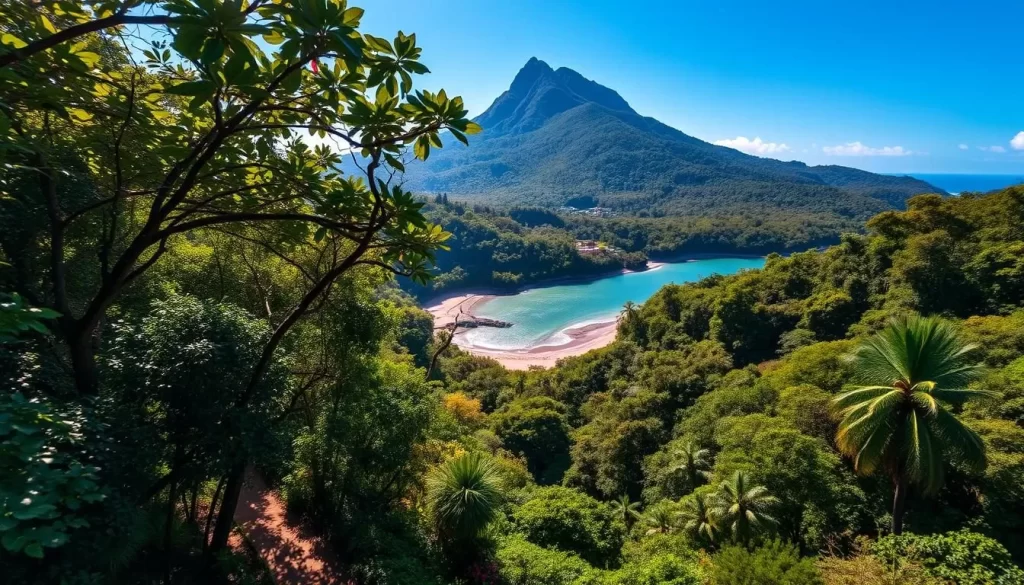
As you prepare for yourtrip, remember that the right preparation will make your adventure more enjoyable and stress-free. With the right mindset and gear, you’re ready to embark on an unforgettable journey through one of Costa Rica’s most breathtaking national parks, making the most of yourtimeand enjoying the refreshingwatersources along the way.
Budget Planning for Corcovado
Before embarking on your journey to Corcovado, it’s vital to plan your budget to ensure a smooth experience. Understanding the costs involved is the first step in making the most of your way to this incredible destination.
Tour Costs and Options
The cost of visiting Corcovado National Park can vary significantly depending on the type of tour you choose. Expect to pay $80-100 USD per person for day trips. For people looking for a more immersive experience, the cost of an overnight stay is substantially higher, at least $300 USD per person. Multi-day hiking adventures can cost anywhere from $500 to $700+ USD per person.
| Tour Type | Cost per Person (USD) |
|---|---|
| Day Trip | $80-100 |
| Overnight Stay | $300+ |
| Multi-Day Hiking | $500-$700+ |
Money-Saving Tips
There are several ways to save money on your Corcovado adventure. Visiting during the green season (May-June or November) can be a cost-effective way to experience the park, as many operators offer discounted rates during this time. Booking tours directly with local operators rather than through international websites or hotel concierges can also help you save, as it eliminates substantial markups. Traveling with a group of friends can be another effective way to reduce costs, as many tour operators offer discounts for parties of four or more people. Additionally, combining Corcovado with other activities in the area, such as Caño Island snorkeling, can help reduce overall transportation costs. Booking in advance not only secures your spot but can also provide access to early booking discounts, especially for overnight stays during less busy periods.
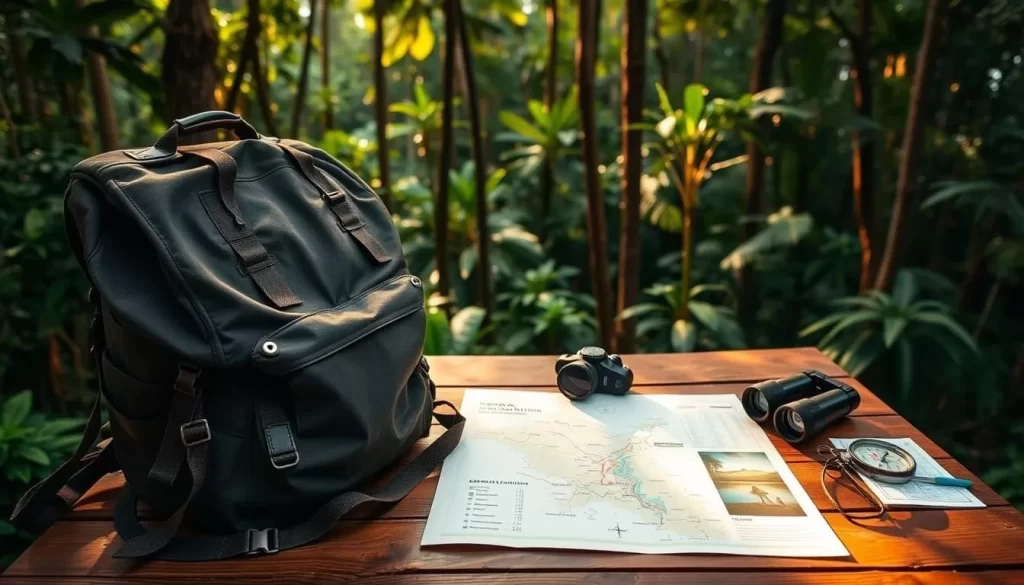
By planning ahead and being mindful of your expenses, you can have a memorable and enjoyable trip to Corcovado without breaking the bank.
Is Corcovado National Park Worth the Visit?
For nature enthusiasts, the experience of visiting Corcovado National Park is unparalleled, but is it worth the investment? The answer largely depends on your travel style, budget, and interests.
Corcovado offers an unmatched opportunity for wildlife watching and immersing oneself in a pristine natural environment. For those who value this kind of experience, the park is definitely worth the visit.
| Traveler Type | Recommendation |
|---|---|
| Wildlife Enthusiasts | Highly Recommended |
| Budget Travelers | Consider alternative options near the park |
| Nature Lovers | Worth the investment for an overnight stay |
In conclusion, if you’re seeking an authentic wilderness experience in a unique place, Corcovado National Park is a top choice, despite the challenges and costs. There are various ways to visit Corcovado, and choosing the right one for you will make it a worthwhile trip.
Conclusion
With its unparalleled wilderness experience, Corcovado National Park is a nature lover’s paradise, offering a unique adventure in the heart of Costa Rica.
Corcovado National Park stands out as Costa Rica’s crown jewel of biodiversity, providing an immersive experience into one of the world’s most biologically intense ecosystems. Here, you can engage in a variety of activities, from nature watching and hiking to overnight adventures and marine exploration, making it a truly holistic experience in Corcovado National Park, Costa Rica.
While visiting Corcovado National Park requires more planning, effort, and budget compared to other destinations, the rewards of experiencing this pristine nature reserve make it well worth the investment. It’s essential to adopt responsible tourism practices, including adhering to park regulations and selecting environmentally conscious tour operators, to preserve this unique ecosystem for future generations.
As you embark on your journey to Corcovado National Park, be prepared to embrace the wild and unpredictable nature of this incredible destination. Every visit offers unique encounters and the rare opportunity to disconnect from modern life and deeply connect with the natural world. We encourage you to add this extraordinary destination to your Costa Rica itinerary, promising memories and experiences that will last a lifetime.
The above is subject to change.
Check back often to TRAVEL.COM for the latest travel tips and deals.
